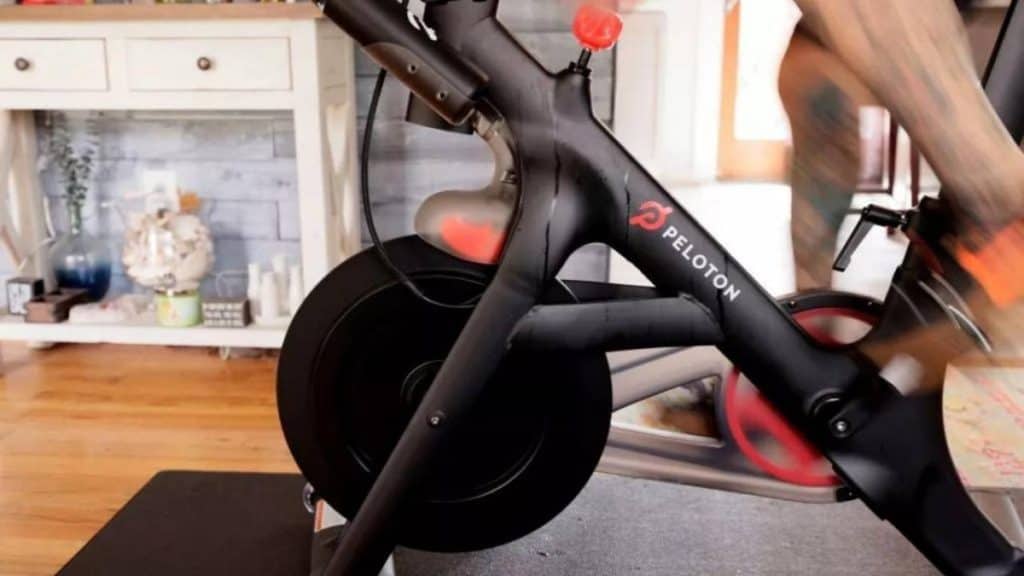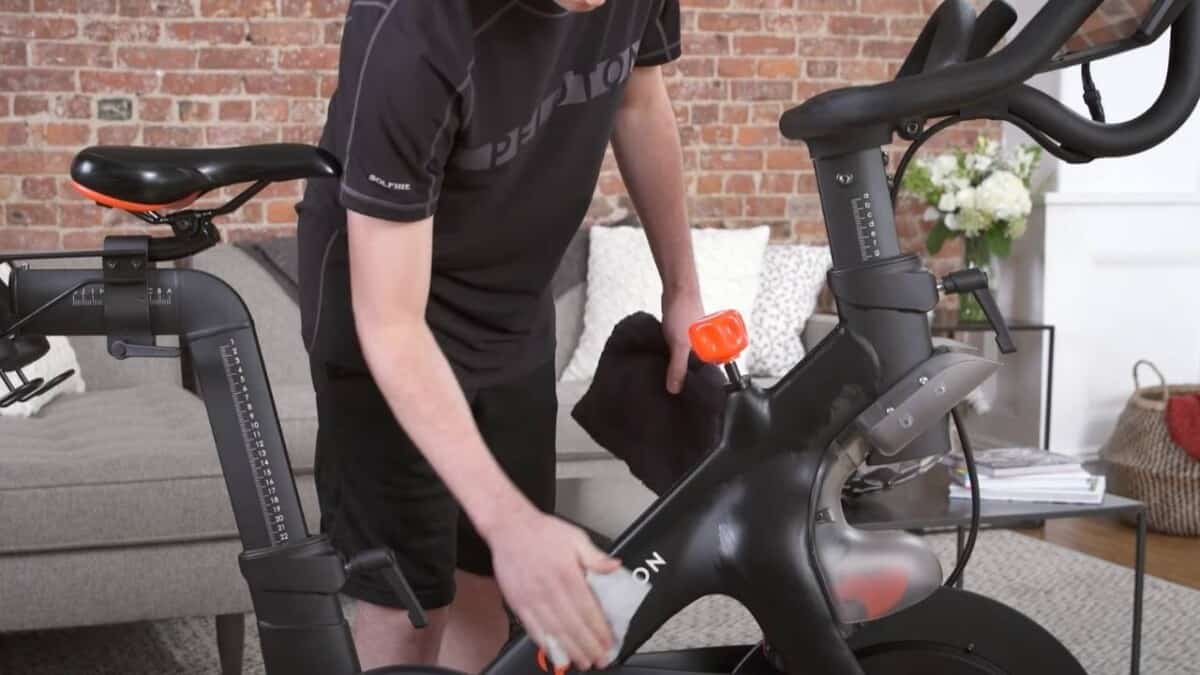The Peloton bike is a popular exercise tool that has been gaining traction in recent years. Those who have used it often question the accuracy of its speed readings, and whether they are beneficial to their workout routine.
This is because the Peloton bike offers a unique type of exercise experience, with many features such as live-streamed classes and personalized workouts. It is important to understand how accurate these speed readings are so that users can get the most out of their workout experience on the Peloton bike.
With this knowledge, users will be able to maximize their fitness goals by adjusting their exercises accordingly or relying on different metrics for tracking progress. In this article, we’ll explain why knowing if your Peloton’s speed reading is accurate matters and what benefits you can reap from using it correctly.
Table of Contents
Peloton Bike Speed Accuracy

The speed accuracy of the Peloton bike is very good especially when they are new because they are calibrated by Peloton. After 12 months use a calibrated kit to keep the speed within an accuracy range of +/- 0.2 mph. Peloton bike + do this automatically through the settings.
The Peloton bike has a built-in power meter that helps to measure your output during each workout with accuracy. With all of these features combined, the Peloton bike is one of the most accurate bikes available on the market today.
Therefore, if you regularly calibrate your Peloton bike the speed is very accurate and will be 99% true on your metrics.
How Does Peloton Calculate Speed
Peloton bikes come with a sensor that measures the revolutions per minute (RPM) of the pedals. This number is then converted into miles per hour (MPH). The bike also has a built-in computer that keeps track of your total ride time and distance, as well as other metrics such as average speed and power output.
In order to ensure accuracy, it is important to calibrate the bike every 12 months or 6 months if you use your Peloton daily. This ensures that the RPM reading is accurate, which then allows for an accurate speed calculation.
Knowing how accurate is Peloton bike speed will help users get the most out of their workout experience on the Peloton bike. With its accurate speed readings and power output meters, it’s an invaluable tool for staying fit and healthy. With proper calibration, you can be sure that the bike is giving you an accurate reading of your speed which will allow you to maximize your workout experience.
Do You Need to Calibrate a Peloton bike
Yes, it is important to calibrate the bike every 12 months in order to ensure accuracy. This involves loosening and tightening the flywheel wheel and resistance handle. Peloton provide a calibration kit. Peloton bike + don’t require calibration kits its done in the settles automatically.
By taking the time to calibrate your bike, you’ll be able to get an accurate reading of your speed and power output during each ride. This will give you a better understanding of how you are progressing towards your fitness goals.
How Do you Calibrate a Peloton Bike
To calibrate your Peloton bike watch this video below.
Accuracy of Peloton Metrics
Peloton bikes are known for their ability to provide accurate and reliable metrics. These metrics help users track their progress and achieve their fitness goals. In this section, we will discuss the accuracy of Peloton metrics in detail.
Speed
The speed metric on Peloton bikes measures how fast the rider is pedaling. It is calculated by the number of revolutions per minute (RPM) of the pedals. The speed metric is accurate and reliable, as it is based on the number of revolutions of the pedals.
Distance
The distance metric on Peloton bikes measures the distance covered during a workout. It is calculated by the speed and the time spent on the bike. The distance metric is accurate and reliable, as it is based on the speed and time spent on the bike.
Watts
The watts metric on Peloton bikes measures the power output of the rider. It is calculated by the resistance and the speed of the pedals. The watts metric is accurate and reliable, as it is based on the resistance and speed of the pedals.
Resistance
The resistance metric on Peloton bikes measures the difficulty level of the workout. It is adjustable and can be increased or decreased based on the user’s preference. The resistance metric is accurate and reliable, as it is adjustable and can be set to the user’s preference.
Weight
The weight metric on Peloton bikes measures the weight of the rider. It is used to calculate the calories burned during a workout. The weight metric is accurate and reliable, as it is based on the weight of the rider.
Cadence
The cadence metric on Peloton bikes measures the number of pedal revolutions per minute. It is used to track the speed and intensity of the workout. The cadence metric is accurate and reliable, as it is based on the number of pedal revolutions per minute.
Heart Rate
The heart rate metric on Peloton bikes measures the user’s heart rate during a workout. It is calculated using sensors on the bike or a connected heart rate monitor. The heart rate metric is accurate and reliable, as it is based on the user’s heart rate.
Power Output
The power output metric on Peloton bikes measures the user’s power output during a workout. It is calculated using the resistance and the speed of the pedals. The power output metric is accurate and reliable, as it is based on the resistance and speed of the pedals.
Power Zone
The power zone metric on Peloton bikes measures the user’s power output in different zones. It is used to track the intensity of the workout. The power zone metric is accurate and reliable, as it is based on the user’s power output.
Community
The community metric on Peloton bikes measures the user’s engagement with the Peloton community. It includes metrics such as the number of followers, the number of high-fives received, and the number of achievements unlocked. The community metric is accurate and reliable, as it is based on the user’s engagement with the Peloton community.
Technology
The technology metric on Peloton bikes measures the user’s engagement with the Peloton platform. It includes metrics such as the number of on-demand classes taken, the number of live classes taken, and the number of workouts completed. The technology metric is accurate and reliable, as it is based on the user’s engagement with the Peloton platform.
Sensors
The sensors on Peloton bikes measure various metrics such as heart rate, cadence, and power output. These sensors are accurate and reliable, as they are designed to measure these metrics accurately.
Power Meter
The power meter on Peloton bikes measures the user’s power output during a workout. It is accurate and reliable, as it is designed to measure the user’s power output accurately.
Accessories
Peloton offers various accessories such as heart rate monitors, shoes, and headphones. These accessories are designed to work seamlessly with Peloton bikes and provide accurate and reliable metrics.
How Accurate is Peloton Speed Summary
Peloton bikes provide accurate and reliable metrics that help users track their progress and achieve their fitness goals. The metrics are based on various factors such as speed, distance, watts, resistance, weight, cadence, heart rate, power output, power zone, community, technology, sensors, power meter, and accessories.



